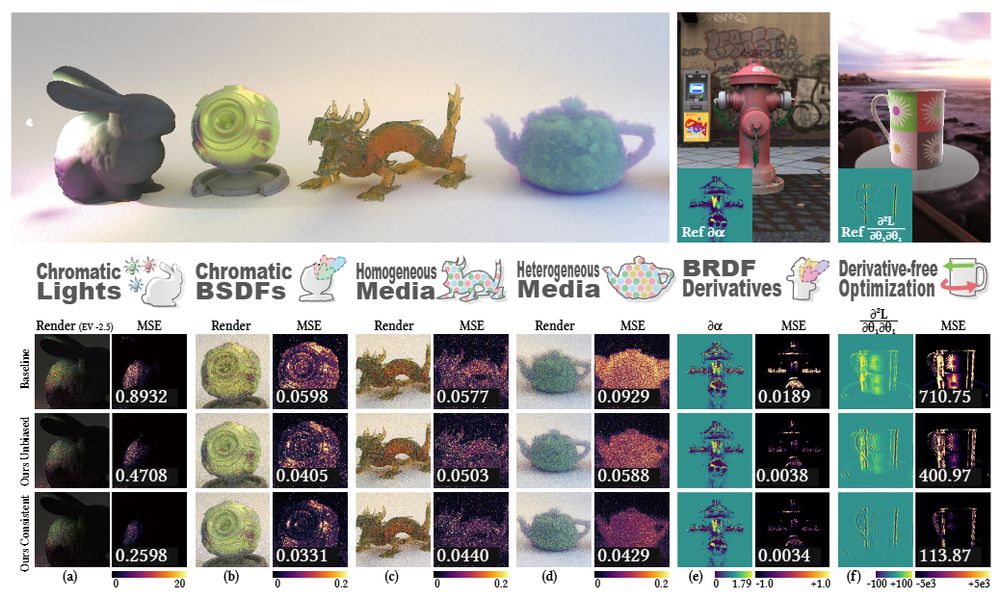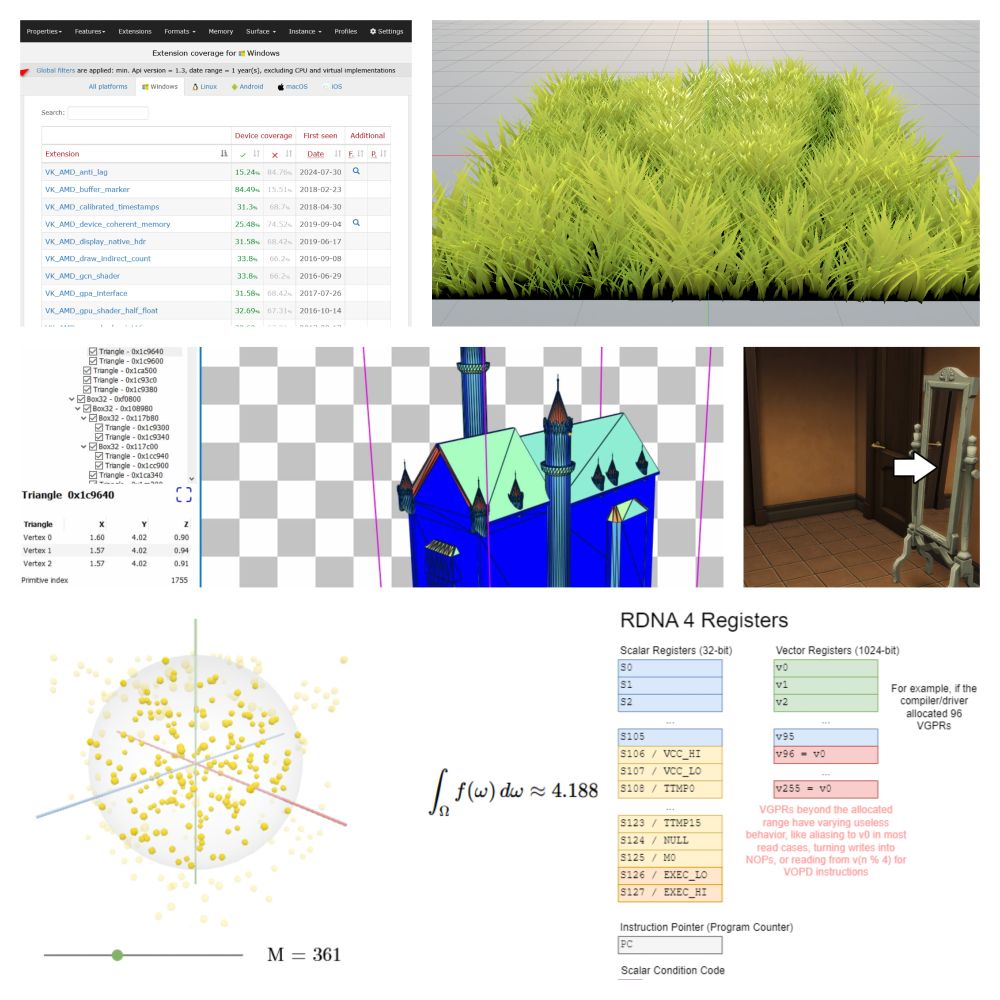
Computer Graphics, Programming, Math, OxCaml, C++

wavetracer.dev
wave_tracer combines path tracing and wave optics in a novel way, for practical general-purpose wave simulations across a variety of EM modalities and applications.

wavetracer.dev
wave_tracer combines path tracing and wave optics in a novel way, for practical general-purpose wave simulations across a variety of EM modalities and applications.
Part five (thenumb.at/QMC) covers Quasi-Monte Carlo: negative correlation, stratified and adaptive sampling, and low-discrepancy sequences.

Part five (thenumb.at/QMC) covers Quasi-Monte Carlo: negative correlation, stratified and adaptive sampling, and low-discrepancy sequences.
www.youtube.com/watch?v=XGGS...

www.youtube.com/watch?v=XGGS...
The project page has a 2D demo with source code and more details:
graphics.cs.utah.edu/research/pro...
The project page has a 2D demo with source code and more details:
graphics.cs.utah.edu/research/pro...

OxCaml is Jane Street's branch of OCaml. We've given it a new name and a snazzy logo, and done a bunch of work to make it easy for people to try.

Big thanks to Markus Kettunen for verifying the theory, reviewing the article, and catching a key detail I had missed.
agraphicsguynotes.com/posts/unders...

Big thanks to Markus Kettunen for verifying the theory, reviewing the article, and catching a key detail I had missed.
agraphicsguynotes.com/posts/unders...
[1/16]

[1/16]

Part three (thenumb.at/Sampling/) discusses how to create samplers using rejection, inversion, and changes of coordinates.
Part three (thenumb.at/Sampling/) discusses how to create samplers using rejection, inversion, and changes of coordinates.

Part two (thenumb.at/Monte-Carlo/) explores how and why it works.
Part two (thenumb.at/Monte-Carlo/) explores how and why it works.
youtu.be/g3qd4zpm1LA?...

youtu.be/g3qd4zpm1LA?...
The first (thenumb.at/Probability) is a review/overview of continuous probability, including random variables, distributions, expectation, variance, probability bounds, and the Dirac delta.

The first (thenumb.at/Probability) is a review/overview of continuous probability, including random variables, distributions, expectation, variance, probability bounds, and the Dirac delta.
Instead, I'm now nervous when my students give talks!
Fortunately, they do an amazing job.
Here's Mark Gillespie giving an extended talk on a new *harmonic* surface representation:
www.youtube.com/watch?v=9h13...

Instead, I'm now nervous when my students give talks!
Fortunately, they do an amazing job.
Here's Mark Gillespie giving an extended talk on a new *harmonic* surface representation:
www.youtube.com/watch?v=9h13...
www.youtube.com/watch?v=C1g_...
www.youtube.com/watch?v=C1g_...
Part 2 will come next week.
momentsingraphics.de/Radiometry1B...

Part 2 will come next week.
momentsingraphics.de/Radiometry1B...
MPL: Provably Efficient Parallel Programming
Two sessions; three hours total. A short description of the tutorial is available here: cs.nyu.edu/~shw8119/25/...
MPL: Provably Efficient Parallel Programming
Two sessions; three hours total. A short description of the tutorial is available here: cs.nyu.edu/~shw8119/25/...
www.youtube.com/watch?v=jusW...
It's an any% speedrun of our GPU-driven rendering, shadows, global illumination, water, and DoF, involving a few weird tricks.

www.youtube.com/watch?v=jusW...
It's an any% speedrun of our GPU-driven rendering, shadows, global illumination, water, and DoF, involving a few weird tricks.

